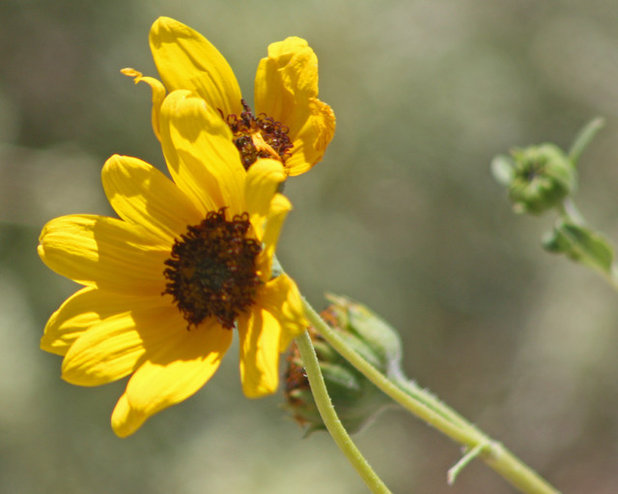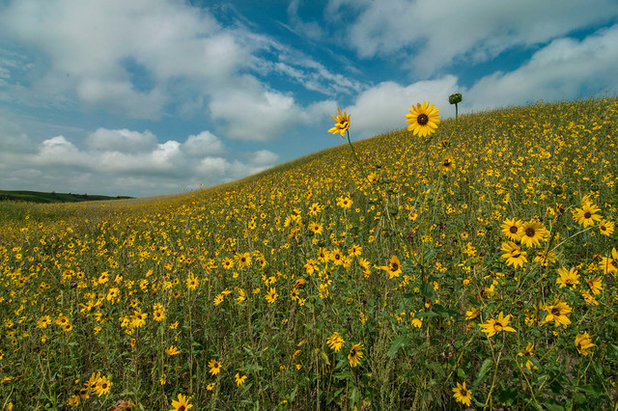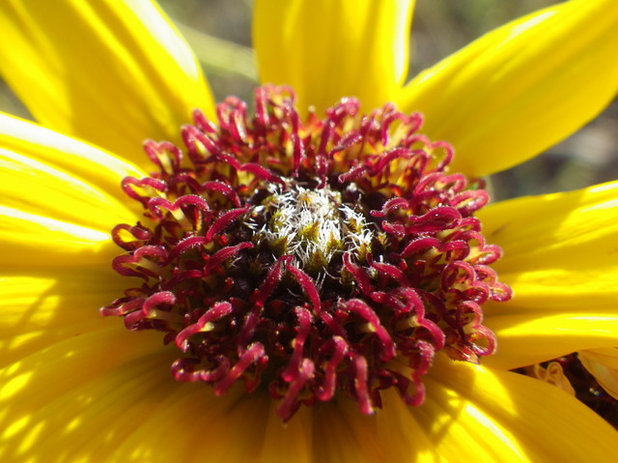Sunflowers can help landscapes focused on attracting pollinating insects and other wildlife through the seasons. The diversity of insects they attract with their pollen and nectar is astounding, and many birds and other creatures feed on their ripe seeds in fall and winter.
Prairie sunflower (
Helianthus petiolaris) is a common annual in the middle of the country, often emerging after a disturbance like a fire. It is easy to grow in a managed garden and is a boon to wildlife, who know it well. You’ll be thankful for its cheery color in late summer and ornamental qualities in winter.
 Botanical name: Helianthus petiolarisCommon names:
Botanical name: Helianthus petiolarisCommon names: Prairie sunflower, Plains sunflower
Origin: Native from Wisconsin to Missouri, west through Texas and the Dakotas to Nevada and Arizona; not native to Pacific Northwest
Where it will grow: Annual
Water requirement: Dry to medium soil
Light requirement: Full sun to partial sun
Mature size: 2 to 4 feet tall and 1 foot to 2 feet wide
Benefits and tolerances: Prefers open, sandy, sunny soil in harsh conditions
Seasonal interest: Blooms all summer
When to plant: Seed after danger of frost in spring
Photo by the National Park Service

Chris Helzer
Distinguishing traits. Prairie sunflower plants most often grow in relatively tight clumps with an almost shrub-like appearance, but they can also grow as single stems. Flowers vary from about 1 to 3 inches wide and look good all winter.
How to use it. If you have dry soil, even sandy soil, you can plant this sunflower in drifts among grass or late-fall blooming perennials such as aromatic aster (
Symphyotrichum oblongifolium) or sky blue aster (
Symphyotrichum oolentangiense).
It will also work as a single specimen, but it might get lost in the crowd if in a more formal garden bed. It’s perfect for larger or wilder areas where you need some instant color this year.
 Planting notes.
Planting notes. Prairie sunflower is an annual, so it is best sown after danger of frost in spring. It can self sow like any annual, and that rate will depend on how much wildlife gets to the seeds and how thickly the plantings are around it. If placed among a dense bed, especially one interplanted with a matrix of short prairie grasses like sideoats grama (
Bouteloua curtipendula) or little bluestem (
Schizachyrium scoparium), it will be less likely to self sow. Still, any unwanted seedlings the following year are easily moved or pulled.
Try this or any sunflower native to your region and enjoy feeding scores of beneficial pollinators and birds.
Photo by Matt Lavin





